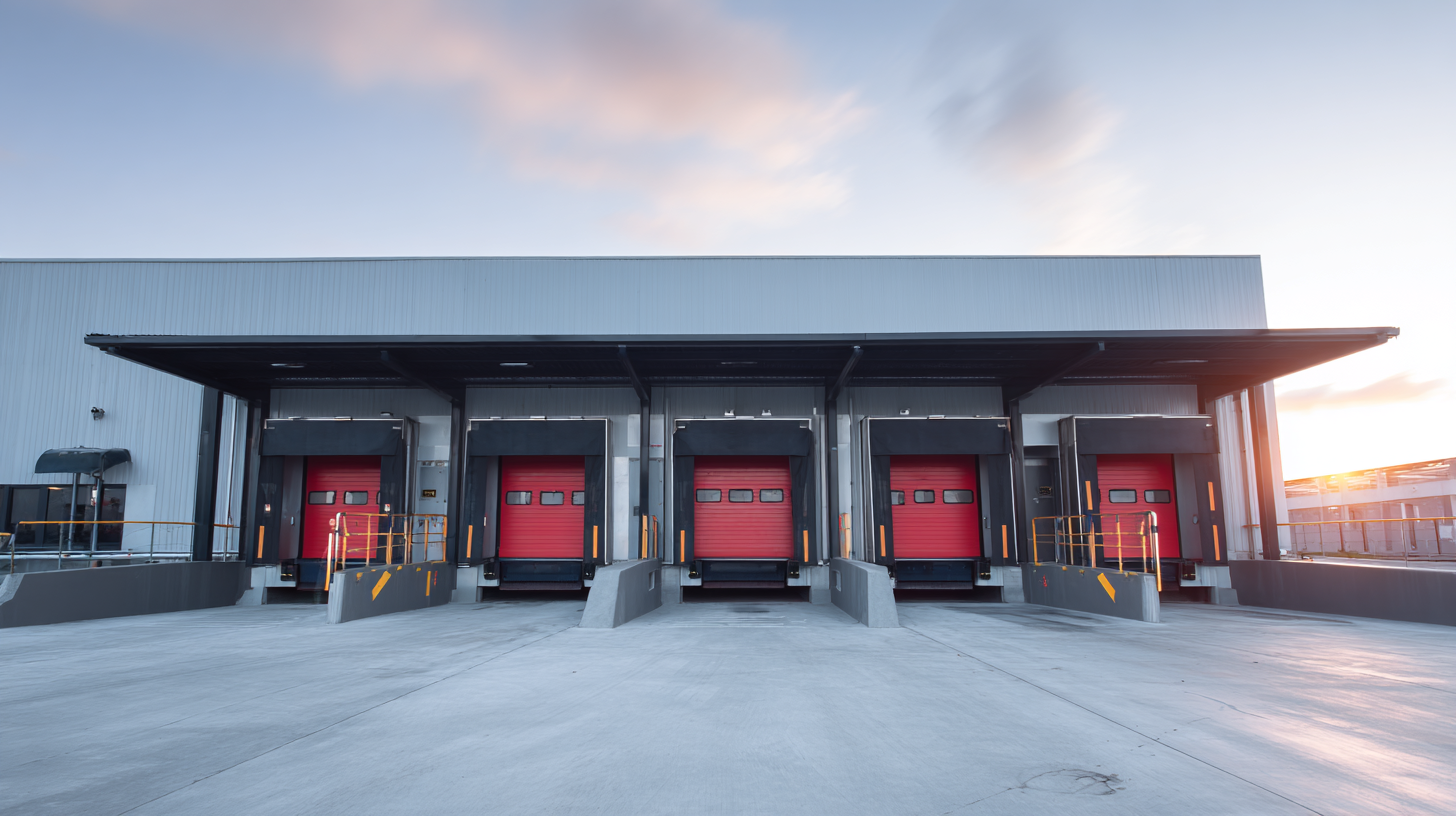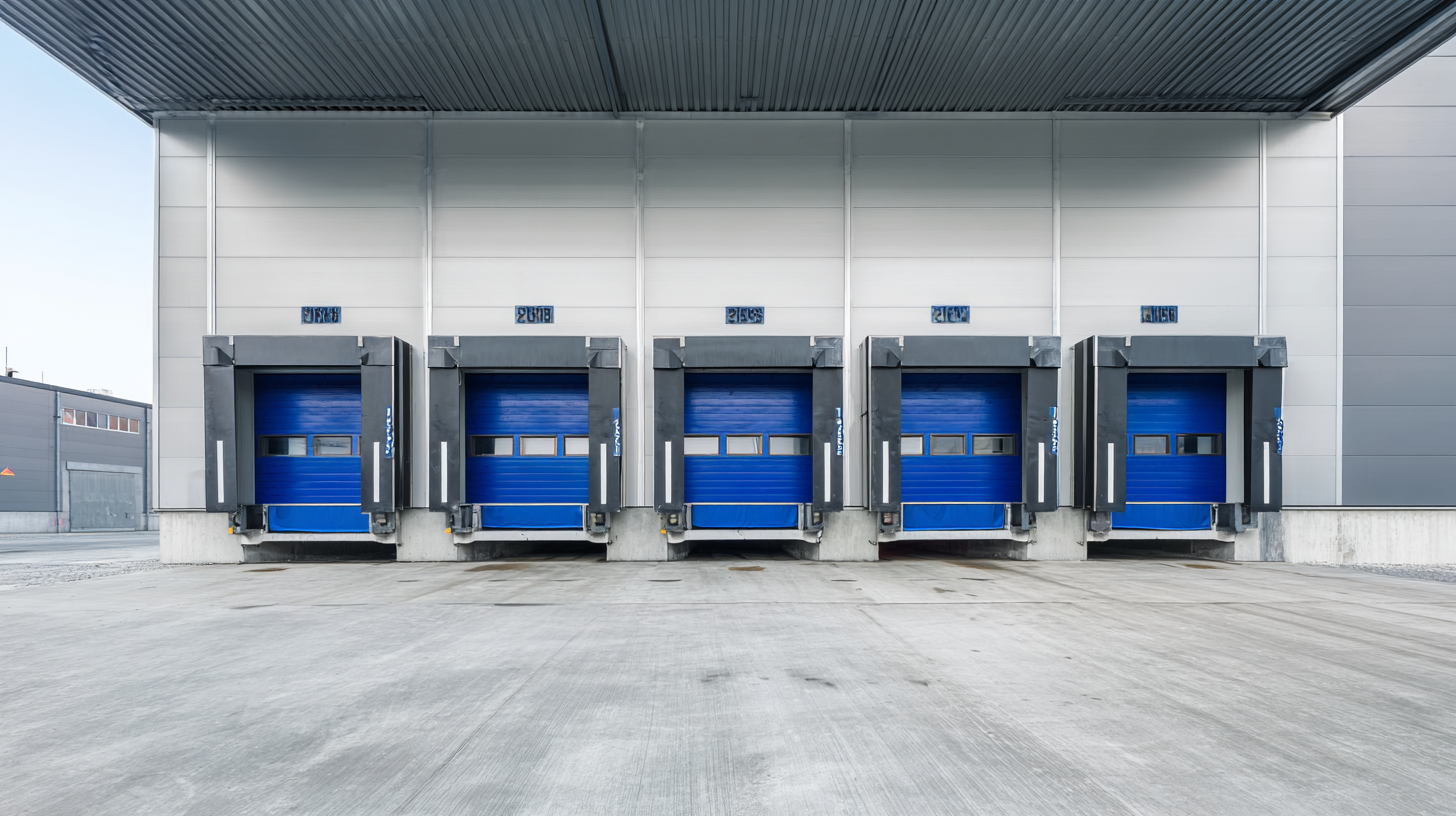In today's fast-paced logistics environment, maximizing operational efficiency is crucial for warehouses aiming to stay competitive. One often-overlooked component that significantly impacts energy savings and productivity is the choice of dock door seals. According to a report by the U.S. Department of Energy, proper sealing of loading docks can reduce energy costs by up to 20%, while also providing enhanced protection against pests and environmental elements. With nearly 90% of supply chain managers recognizing that effective dock management is critical to overall performance, understanding the best practices in selecting the right dock door seals is essential. This guide aims to equip warehouse operators with the insights needed to make informed decisions when it comes to dock door seals, ultimately fostering a more efficient and cost-effective operation.

Dock door seals play a crucial role in enhancing warehouse efficiency by minimizing energy loss, maintaining temperature control, and reducing contamination from external elements. These seals create a barrier between the interior of the warehouse and the outside environment, preventing drafts and moisture from entering. By properly sealing dock doors, warehouses can significantly lower their heating and cooling costs, which ultimately contributes to overall operational efficiency.
Furthermore, effective dock door seals improve safety and reduce the risk of product damage. Inadequate sealing can lead to pests, dust, and other contaminants infiltrating the storage area, potentially compromising inventory quality. By investing in high-quality dock door seals, warehouse managers can ensure that their operations run smoothly, maintain compliance with health standards, and protect their assets. The selection of the right seals becomes essential in cultivating a streamlined workflow, allowing for quicker loading and unloading processes while maintaining an optimal working environment.
| Seal Type | Material | Thermal Insulation (R-value) | Water Resistance | Durability (Years) | Cost ($ per unit) |
|---|---|---|---|---|---|
| Rubber Dock Seal | Natural Rubber | 5 | High | 10 | 150 |
| Vinyl Dock Seal | PVC Vinyl | 3 | Medium | 8 | 100 |
| Foam Dock Seal | Polyurethane Foam | 4 | High | 6 | 80 |
| High-Performance Dock Seal | Heavy-Duty Composite | 7 | Very High | 12 | 300 |
When selecting dock door seals for your warehouse, several key factors should be considered to maximize efficiency. Firstly, assess the types of vehicles that will be using the loading docks. Different trucks may require specific seal dimensions and configurations. A properly fitting seal not only prevents air leaks but also enhances the overall efficiency of loading and unloading operations, ensuring that products are protected from outside elements.

Another critical factor is the material of the dock door seal. Options such as rubber, vinyl, or foam each offer different benefits in terms of durability and insulation. For example, rubber seals are known for their longevity and ability to withstand heavy usage, making them ideal for high-traffic docks. On the other hand, foam seals provide excellent thermal insulation, which is particularly important for temperature-sensitive cargo. Evaluating the specific requirements of your warehouse operations will help you choose the right material for optimal performance and cost-effectiveness.
When selecting dock door seals for a warehouse, it's crucial to understand the various types available and their specific benefits. Traditional vinyl seals are popular for their durability and resistance to wear, making them suitable for areas with heavy traffic. They create a tight barrier against dust, moisture, and pests, which is essential for maintaining a clean and safe working environment. However, they may not be as effective in extreme temperature fluctuations, which can lead to degradation over time.
In contrast, inflatable dock seals offer superior adaptability and insulation. These seals expand upon contact, providing a snug fit against the truck trailer, thus minimizing air leaks and enhancing energy efficiency. They are particularly advantageous in temperature-controlled warehouses, where maintaining specific climate conditions is vital. On the other hand, foam seals, which are lighter and easier to install, can be a cost-effective solution for less demanding conditions, although they might not provide the same level of protection as their heavier-duty counterparts. Ultimately, the choice of dock door seals should be informed by a careful assessment of the warehouse's operational needs and environmental challenges.
Maintaining dock door seals is crucial for ensuring energy efficiency and protecting warehouse environments from the elements. According to the U.S. Department of Energy, properly maintained dock door seals can reduce energy costs by up to 30%. To achieve this, regular inspections are necessary. Look for signs of wear and tear such as cracks, tears, or gaps that can compromise performance. Industry professionals recommend inspecting seals at least quarterly and replacing any damaged components promptly to prevent additional energy losses.
Another effective strategy for prolonging the lifespan of dock door seals involves proper cleaning and environmental management. Dust, debris, and moisture can significantly degrade seal materials over time. Utilize a soft brush or vacuum to remove debris and a mild detergent solution for cleaning. Additionally, consider installing weather-stripping or protective awnings to shield seals from extreme weather conditions, further minimizing wear. Research from the International Institute of Refrigeration indicates that maintaining optimal warehouse temperatures can also extend the life of door seals, maintaining their effectiveness for up to 10 years or more when treated properly. These simple maintenance practices can lead to significant long-term cost savings and improved operational efficiency.
When it comes to optimizing warehouse operations, proper seal installation for dock doors is crucial. The right seals not only enhance energy efficiency but also prevent dust, moisture, and pests from entering, thereby safeguarding the integrity of stored goods. This is especially important in the context of modern supply chain management, where delays or contamination can lead to significant financial losses.
**Tips for Installation:**
Ensure your dock door seals are compatible with the specific dimensions and design of your doors. This compatibility facilitates a proper fit, minimizing air leaks and maximizing thermal insulation. Additionally, regular maintenance checks should be scheduled to inspect for wear and tear, as well-maintained seals can considerably prolong the lifespan of your warehouse systems.
Incorporating IoT technology can further enhance seal management. By using sensors to monitor seal performance and detect potential failures, warehouses can proactively address issues before they escalate. This real-time data stream can ultimately lead to improved operational efficiency and reduced costs in the long run.
